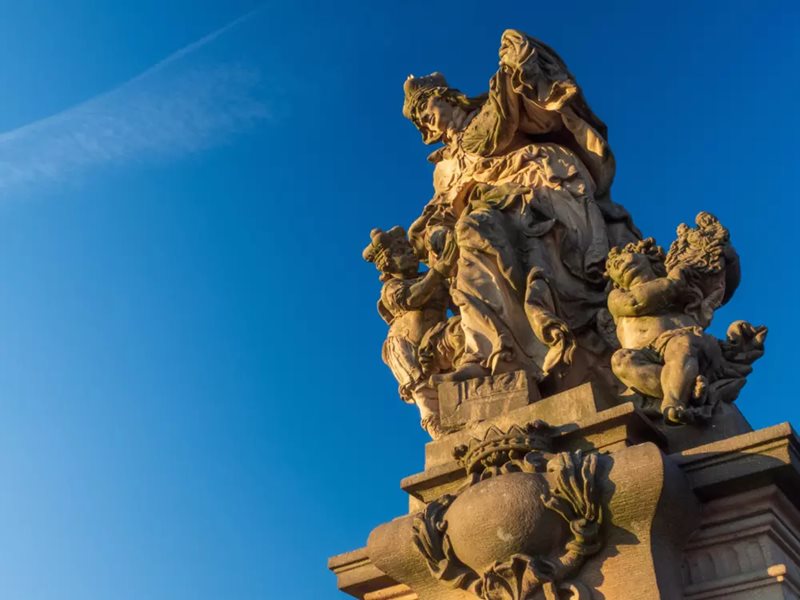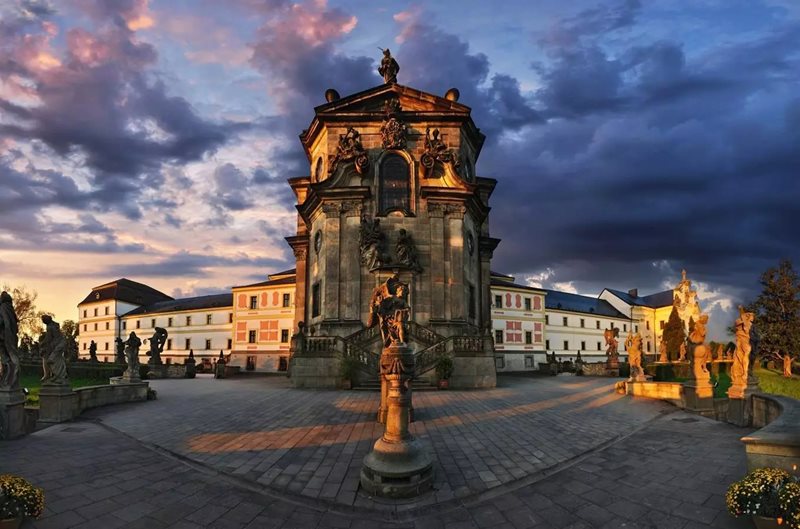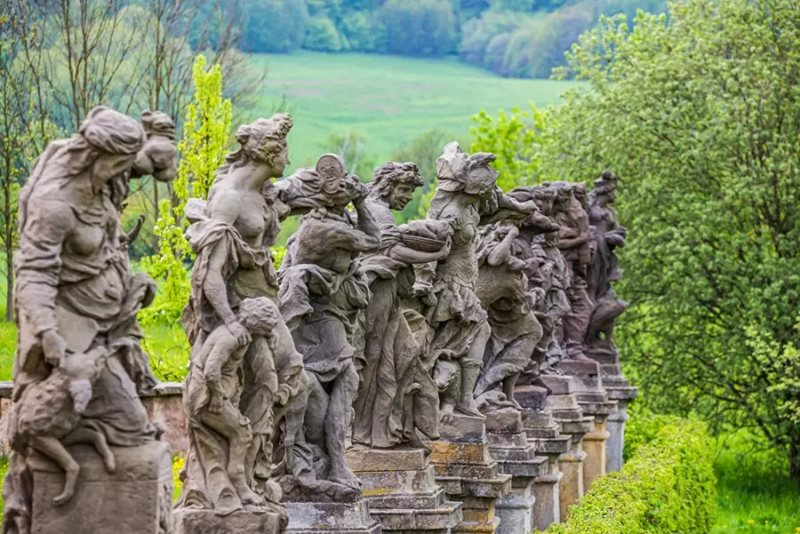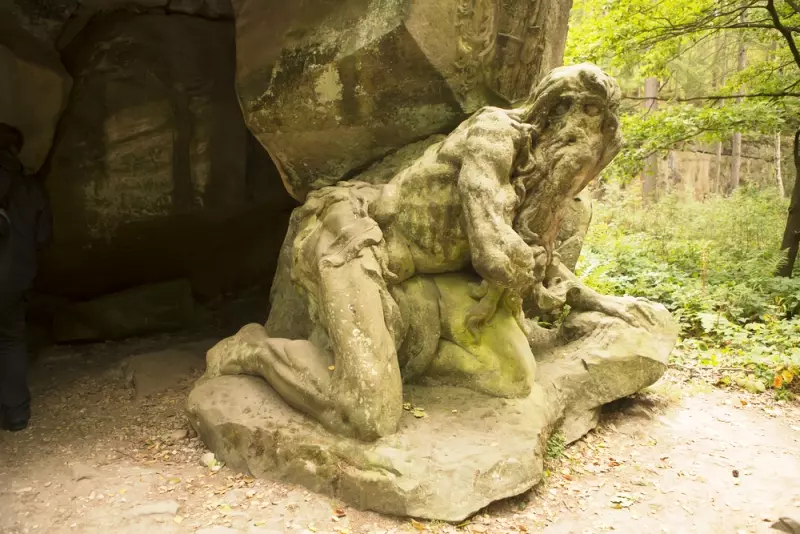Braun, the shining star
With his first statue of Saint Luthgard for the oldest preserved bridge in Prague, now Charles Bridge, Braun was not only acclaimed and admired by the people of Prague, but was also then commissioned for a great many new works. But let’s take all this step by step! Matthias Bernard Braun, Czechia’s most famous Baroque sculptor, was born on 24 February 1684 as the fifth child in a blacksmith’s family, in a small village near Innsbruck. Matthias studied sculpture in Salzburg and evidently visited Italy as a journeyman, where he saw the work of Michelangelo and Bernini.
It was probably in 1708 that he came to the monastery in Plasy, and two years later moved to Prague, where he got straight to work on his commission for that famous sculptural group depicting the Dream of St. Luthgard on Charles Bridge. In the same year he created another set of sculptures for Charles Bridge entitled Saint Ivo. These acclaimed works brought him a flood of new commissions, so he opened his own stone sculpting workshop on what is now Karlovo náměstí in Prague.

St. Ludmila on Charles Bridge in Prague.
He couldn't have done it without a patron!
One very important moment in Braun's life was when he met Count František Antonín Špork, who recognised his extraordinary talent and became his main patron. He commissioned him to create decorative sculptures at his residence at Kuks near Dvůr Králové in East Bohemia.

Kuks
Kuks Hospital is an important Baroque heritage site; the famous monumental Church of the Holy Trinity is located in the grounds and it boasts one of the oldest pharmacies - U Granátového jablka (The Pomegranate). It is stocked with all kinds of "medicine". These include oddities such as a container with the inscription "bone from the heart of a deer", or "powder from the skull of a hanged man".

Kuks
Over the course of many years, Braun created a magnificent body of work in Kuks, including his Virtues and Vices, a gallery of 24 outdoor sculptures. Further proof of his skills can be seen in the monumental sculpture reserve Braun’s Bethlehem, carved into sandstone just a few kilometres from Kuks, in the open countryside in the Nový les forest.

Braun’s Bethlehem near Kuks.
This entire work is the pinnacle of European Baroque sculpture and has been declared a national cultural heritage site, included in the UNESCO Cultural Heritage Tentative List. There is a nature trail leading from the Hospital in Kuks to Braun’s Bethlehem.

Braun’s Bethlehem near Kuks.
You can follow in the footsteps of Matthias B. Braun in Prague: besides Charles Bridge, as we’ve already mentioned, where he also carved the statue of St. Ludmila, the original of which is stored in Vyšehrad, he also did the sculptures adorning St. Clement's Cathedral in the Clementinum, in the extensive complex of Baroque buildings near Charles Bridge in Prague’s Old Town, home to the most beautiful library hall in the world.

The Vrtba Garden in Prague.
His sculptures also adorn the interiors of the Černín Palace, the Thun Palace in Nerudova ulice, the Grand Priory Palace, the Clam-Gallas Palace and also the terraced Italian-style Vrtba Garden. In addition, he carved the tombstone of Count Šlik in St. Vitus Cathedral at Prague Castle.
A wealthy burgher
With all this hard work, the famous sculptor became very wealthy and bought several houses in Prague. These included the U tří lilií (Three Lilies) house in what is now Jungmannova ulice, which Braun rebuilt and soon sold. Before long he became an affluent citizen of the New Town and bought himself the large U Kamenného stolu (Stone Table) house at no. 617/24 on Karlovo náměstí, now situated opposite the New Town Hall. He spent the rest of his life there and ran an important sculpture workshop. There is now a commemorative plaque on the building.
Braun lived his life in the shadow of the disease that often afflicted sculptors and stonemasons. Consumption (tuberculosis) sapped his strength and eventually ended his career as an artist. This lung disease finally led to his death on 15 February 1738 in Prague.
Statues at châteaux and in gardens
His sculptures also adorn the parks and gardens of the châteaux in Veltrusy, Duchcov, Konopiště, Liběchov and Lysá nad Labem. You can also admire Braun’s exquisite works in the Church of the Discovery of the Holy Cross in Litomyšl, while his wood carvings decorate the monastery in Plasy, and Braun also created the Plague Column for the garden of the Church of the Discovery of the Holy Cross in Liberec. He also carved the tombstone depicting a weeping woman on his mother-in-law's grave in Jaroměř, which is a truly fine example of Czech funereal sculpture.
Matthias Braun is himself buried in a tomb in front of the Chapel of Cornel in St. Stephen's Church in Štěpánská ulice in Prague.

Valeč Castle
Braun’s statues on Charles Bridge in Prague:
As you walk from the Old Town Bridge Tower to Malá Strana in Prague, you’ll find these statues by Braun on the left-hand side.
St. Ivo – Saint Ivo is the patron saint of lawyers; a widow with her children looks up to the saint, who ministers to them before the court. To his right, blindfolded and bearing a sword, is Justice.
St. Luthgard or The Dream of St. Luthgard – the sculptor's first known work and the finest work of art on Charles Bridge in Prague. The original sandstone sculpture is housed in the Lapidarium of the National Museum at the Výstaviště exhibition ground.
St. Ludmila with the young Wenceslas – In her left hand, St. Ludmila holds the veil with which she was strangled, while with her right she points to the Bible from which she is teaching the young Wenceslas to read. The relief on the pedestal portrays Wenceslas' execution.










